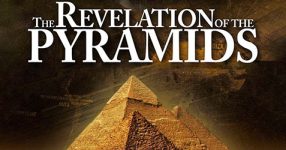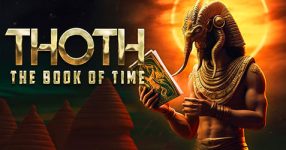In the documentary “Why Tutankhamun’s Mummy Baffles Historians To This Day” viewers are taken on a captivating journey back to Egypt in 1323 BC. The narrative begins with the shocking news of the young pharaoh Tutankhamun’s death, setting the stage for one of the most famous tombs in history. The story unfolds, revealing the high-stakes race to succeed the pharaoh buried in this ancient tomb.
The ancient Egyptians regarded the burial of their kings with utmost seriousness. The documentary emphasizes the meticulous process involved in ensuring a proper burial for the pharaoh. From mummification to the inclusion of impressive grave goods, every step was crucial to secure the pharaoh’s place among the gods in the afterlife.
Unusual Discoveries in Tutankhamun’s Mummy
Salima Ikram, a renowned expert on ancient Egyptian mummies, scrutinizes Tutankhamun’s mummy through detailed x-rays. Surprisingly, Tutankhamun’s mummification stands out as peculiar, deviating from the high standards seen in other royal mummies of the 18th and 19th dynasties. The documentary explores the unusual aspects of Tutankhamun’s mummification, raising questions about its quality and the reasons behind the discrepancies.
In a demonstration using a mummified sheep, Ikram sheds light on the unconventional aspects of Tutankhamun’s mummification process. The removal of internal organs, especially a significant gash from the navel to the left side, sets Tutankhamun apart from other royal mummies. Additionally, the absence of clear signs of a heart in x-rays adds to the mystery, challenging the norms observed in the mummification of 18th dynasty royal pharaohs.
Political Turmoil and a Race Against Time
The death of Tutankhamun sends Egypt into a state of military and political crisis. Peter Brand, an expert on ancient Egyptian politics, contextualizes Tut’s demise within the backdrop of a major battle loss against the Hittite Empire. As the countdown to the 70th day for Tutankhamun’s burial begins, a high-stakes race unfolds among key figures, including Generalissimo Horemheb, a supreme military commander, to seize power and maintain stability in Egypt.
The documentary delves into the dramatic turn of events following Tutankhamun’s death. Ankhesenamun, Tutankhamun’s widow, makes a desperate diplomatic move by appealing to the king of the Hittite Empire for help. This risky gambit aims to secure her royal position, but it backfires, leading to a diplomatic fiasco and a military attack on Egyptian territory by the Hittites. The political turmoil and unfinished tombs add layers of complexity to Tutankhamun’s historical narrative.
Unraveling the Mysteries of Tutankhamun’s Tomb
The documentary shifts focus to the meticulous investigation of Tutankhamun’s sarcophagus. Archaeologists and Egyptologists analyze photographs and artifacts to uncover potential alterations and inconsistencies. Nicholas Reeves, in particular, examines the sarcophagus and treasures found in Tut’s tomb, raising intriguing questions about the authenticity and origins of certain items.
Nicholas Reeves presents a compelling theory suggesting that some of Tutankhamun’s treasures, including the sarcophagus and shrines, might have been recycled. He proposes that these items were originally made for other kings and repurposed for Tutankhamun’s burial. The revelation challenges the conventional narrative surrounding Tutankhamun’s tomb and adds a layer of complexity to the understanding of ancient Egyptian burial practices.
Political Intrigues and the Legacy of Tutankhamun
As the documentary reaches its conclusion, viewers witness the aftermath of Tutankhamun’s succession and its profound impact on ancient Egyptian politics. The narrative unfolds on the wall paintings of Tutankhamun’s tomb, revealing a story of power struggles and political intrigue. Tutankhamun, though not considered one of Egypt’s greatest pharaohs during his reign, gains posthumous fame due to the preservation of his tomb, offering a unique glimpse into the politics and uncertainties of ancient Egyptian civilization.












